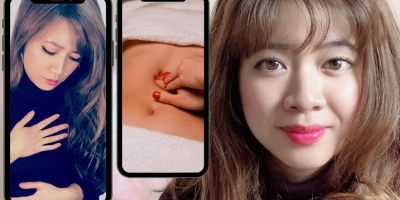You’re here because you’re ready to heal, aren’t you? Maybe you’ve walked away from a relationship that left you raw, or you’re still untangling the emotional knots from one that didn’t quite work out. If you’re navigating life with Borderline Personality Disorder (BPD), or even recovering from it, you know that healing isn’t just about cutting contact or setting physical boundaries. It’s about facing the emotional echoes that linger—the defensiveness, the intense reactions, the inconsistent love—that can follow you into new connections if left unchecked. Let’s talk about how you can process those past relationships, understand your patterns, and open yourself to healthier ways of relating.
Why Healing Past Relationships Matters for Your BPD Journey
Healing from a past relationship when you have BPD isn’t just about moving on; it’s about breaking cycles. You might’ve noticed how old hurts resurface, even when you’re not talking to that ex anymore. Those core issues—maybe your tendency to feel criticized too deeply or to love in a way that feels all-consuming—don’t vanish just because the person does. They can creep into new relationships, projecting old pain onto fresh situations.
For example, I once found myself hyper-fixated on keeping an ex close, pouring so much into the connection that I lost my own grounding. It wasn’t until I stepped back that I saw how my love sometimes veered into manipulation, not because I meant harm, but because I craved security. Sound familiar? If you’ve ever felt like you’re giving too much or reacting too intensely, that’s a sign there’s healing to do. By processing these patterns, you’re not just repairing the past—you’re paving the way for relationships that feel safer and more authentic.
Recognizing BPD Patterns: Defensiveness and Inconsistent Love
One of the toughest parts of BPD is how it shapes the way you love and argue. Maybe you’ve caught yourself getting defensive in arguments, like a wall shoots up the moment someone says something that stings. That defensiveness isn’t just a reaction—it’s a shield, protecting the parts of you that feel too vulnerable. But here’s the thing: it can make the other person feel unheard, unsafe, even invisible.
Or maybe you’ve noticed your love feels like a rollercoaster—intense one day, distant the next. That inconsistency often comes from not fully trusting yourself, which makes it hard to trust others. You might love bomb to strengthen a bond, only to pull back when it feels too much. These patterns aren’t your fault, but they can leave you feeling isolated, craving connection yet stuck in a cycle of pushing it away. Recognizing these tendencies is the first step to healing them.
How Defensiveness Blocks Connection
When you’re in an argument, do you feel like you’re fighting to be seen? The need to defend yourself can be so strong that it drowns out any chance of a real connection. Both you and the other person end up battling to be heard, and suddenly, no one’s listening. It’s exhausting, and it can make relationships feel lonely, even when you’re desperate to feel close.
The truth is, defensiveness often comes from old wounds—maybe a fear of abandonment or a belief that you have to fight to be valued. I’ve been there, snapping at a partner over a small comment because it felt like an attack on my worth. It wasn’t until I saw how my reaction shut down communication that I realized I was contributing to the disconnect. By noticing when you’re shutting down or escalating, you can start to pause and ask: What am I protecting? What do I need to feel safe? This kind of self-awareness is a game-changer for healing.
Taking Accountability Without Losing Yourself
Here’s where it gets tricky: healing means looking at your role in past relationships, but it’s not about blaming yourself. If you’ve ever felt like your reactions were bigger than the situation—like a harsh comment from a partner sent you spiralling into resentment or victimization—that intensity is part of BPD’s emotional lens. It doesn’t mean your feelings aren’t valid. You don’t deserve harshness or criticism, but you might be amplifying the pain in ways that keep you stuck.
Taking accountability isn’t about dismissing what happened to you—it’s about owning what you can control. Maybe you got defensive and shut down communication, or your love swung from all-in to distant because you were scared of losing yourself. Those patterns can make others feel unheard, just like you felt when they criticized you. I saw this when I reflected on a past relationship where my defensiveness made it hard for my partner to open up. It wasn’t all my fault, but I contributed to the disconnect. Recognizing that helped me forgive myself and move forward. You can do the same by asking: What patterns am I repeating, and how can I shift them?
Steps to Heal BPD Relationship Patterns
Healing from past relationships with BPD in mind is like untangling a knot—it takes patience, but each step loosens the grip of old patterns. Here are practical ways to start your BPD relationship recovery:
- Pause and Reflect on Triggers: When you feel that familiar defensiveness rising, take a breath. Ask yourself, What’s underneath this reaction? Maybe it’s fear of abandonment or a need to feel validated. Naming the trigger helps you respond instead of react.
- Own Your Part Without Shame: You don’t have to carry all the blame, but owning your role—like love bombing or escalating arguments—frees you from the cycle of victimhood. Try journaling about a past argument: What could I have done differently? For me, I realized I often made small criticisms feel like attacks, which shut down any chance of real talk.
- Practice Grounded Love: BPD can make love feel like a tidal wave, overwhelming for you and your partner. Practice showing up consistently—small gestures, honest words, no ultimatums. It’s about building trust in yourself, which helps you trust others.
- Let Go of Control: That urge to manipulate or cling to attachment often comes from fear. Instead of trying to secure the relationship, let it breathe. Ask yourself, Can I let this person be themselves without needing to control the outcome?
- Seek Support: Healing isn’t a solo journey. A therapist or support group familiar with BPD can help you spot patterns and practice new ways of relating. Talking with someone who gets it can make all the difference.
Breaking the Cycle of Isolation
You’ve probably felt that loneliness in relationships, even when you’re with someone you love. It’s like you’re both reaching for connection, but end up isolated because you’re stuck defending your own truths. BPD can make you feel like you need the other person to complete you, but that need can pull you further from yourself.
Healing means rebuilding trust in your own heart. When you start to trust your emotions—without amplifying or suppressing them—you can show up in relationships without that desperate need for validation. It’s not about erasing the pain of past relationships; it’s about learning from it so you don’t carry it into the next one. When you notice yourself getting defensive, see it as a signal—not of failure, but of a chance to connect with your truth and the other person’s.
Embracing Vulnerability as Strength
You might think vulnerability is the last thing you want to lean into, especially after a relationship that left you feeling exposed or hurt. With BPD, opening up can feel like handing someone a map to your weaknesses. But here’s the shift: vulnerability isn’t weakness—it’s courage. It’s showing up as your real self, even when you’re scared of being rejected or misunderstood.
When you hide behind defensiveness or try to control the relationship, you’re protecting old wounds, but you’re also keeping the connection at arm’s length. Think about a time you felt dismissed in a relationship. Maybe you poured your heart out, and it felt like they didn’t hear you. That pain is real, and it’s valid. But sometimes, in trying to protect yourself, you might’ve shut them out, too. I’ve been there—snapping at an ex over a small critique because it felt like an attack on my worth. Looking back, I see how my reaction closed the door to understanding. If you’ve done this too, it doesn’t make you bad—it just means you’re human, and you’re learning. Start small: next time you feel that urge to defend, try saying, I hear you, let me think about that. It’s scary, but it opens the door to connection.
Rewriting Your Relationship Story
Healing from BPD relationship patterns is like rewriting a story you’ve been telling yourself for years. Maybe it’s a story where you’re always the one who’s hurt, or where you have to fight to be seen. Those narratives come from real pain, but they don’t have to define your future. You have the power to write a new chapter—one where you love without fear, argue without spiralling, and trust yourself to handle whatever comes.
Start by noticing the stories you tell yourself about past relationships. Do you see yourself as the victim? The one who’s never enough? Write them down, then ask: Is this the full truth? Often, with BPD, emotions can amplify the narrative, making small moments feel like betrayals. For me, I used to replay arguments in my head, turning my ex’s frustration into proof I was unlovable. It wasn’t until I challenged that story—seeing how my defensiveness fueled the fire—that I could let go of the resentment. Try this: pick one memory from a past relationship that still stings. Write what happened, then write what you wish you’d done differently. This isn’t about blame; it’s about seeing where you can grow.
Practical Tools for BPD Relationship Recovery
Healing doesn’t happen in a vacuum—it takes action, even when it feels messy. Here are more tools to help you break free from old patterns and build healthier connections:
- Set Healthy Boundaries: Boundaries aren’t just about keeping people out; they’re about keeping yourself safe while staying open. If you tend to overgive or love bomb, set a boundary with yourself: I’ll check in with my own needs before saying yes to everything. This helps you stay grounded instead of losing yourself in the relationship.
- Practice Self-Validation: BPD can make you crave external validation, but the real game-changer is learning to validate yourself. When you feel overwhelmed, try saying, My feelings make sense, and I can handle them. This builds trust in your own emotions, so you don’t need someone else to prove your worth.
- Use Mindfulness to Stay Present: Intense emotions can pull you into the past or future, replaying old fights or worrying about new ones. Try a simple mindfulness practice: focus on your breath for one minute when you feel triggered. It sounds small, but it helps you stay in the moment instead of spiralling.
- Challenge the Need to Control: That urge to manipulate or cling to attachment often comes from fear of abandonment. Practice letting go by reminding yourself, I am enough, even if this doesn’t go my way. It’s not about giving up—it’s about trusting that you’re okay no matter what.
- Build a Support Network: Surround yourself with people who understand BPD or are willing to learn. Whether it’s a friend, a therapist, or an online community, having people who see you can make the healing process less lonely.
Forgiving Yourself and Others
Forgiveness is tough, especially when you’re hurt. You might want an apology from someone who treated you harshly, and you deserve that accountability. But waiting for it can keep you trapped. Instead, try forgiving yourself first. Forgive the parts of you that reacted too fast, loved too hard, or pushed someone away. For me, forgiving myself for my role in a toxic dynamic—without excusing the other person’s actions—was like lifting a weight. It let me see that I wasn’t just a victim; I was someone capable of growing.
Forgiving others doesn’t mean dismissing their behaviour. It means releasing the hold their actions have on you. You don’t have to reconnect or condone what happened—just let go of the resentment that keeps you tethered to the past. This act of release is for you, so you can move forward with lighter shoulders.
Moving Toward Healthier Connections
Healing from past relationships when you have BPD isn’t about becoming perfect—it’s about becoming real. It’s about showing up as you are, flaws and all, and trusting that you’re enough without needing to control or defend. The patterns you’ve carried—like inconsistent love or defensiveness—don’t define you. They’re just habits you can change with time and care.
Imagine a relationship where you feel safe to be vulnerable, where arguments don’t spiral into isolation, where love feels steady instead of enmeshed. That’s what you’re working toward, and every step you take to heal gets you closer. It’s not about erasing your BPD or pretending the pain didn’t happen—it’s about learning to love and connect in a way that feels true to who you are now.
Your Healing Journey Starts Now
You don’t need to have all the answers today. Healing from BPD relationship patterns is a process, one that starts with small, brave choices. Maybe it’s writing down one moment where you felt defensive and asking what you could do differently next time. Maybe it’s telling a friend or therapist about the pain you’ve been carrying. Every time you choose to pause, reflect, or own your part, you’re rewriting the story of how you love and connect. For support from a therapist who understands, feel free to a book a free consultation
You’re not alone in this. I’ve been there, wrestling with the same patterns, the same intense emotions, and I’ve found that healing is possible when you give yourself permission to try. What’s one small step you can take today to start healing those past relationships? It could be as simple as taking a deep breath and saying, I’m ready to let go and grow. You’ve got this, and every step forward is proof of your strength. Book a consultation to get support on your journey today.



